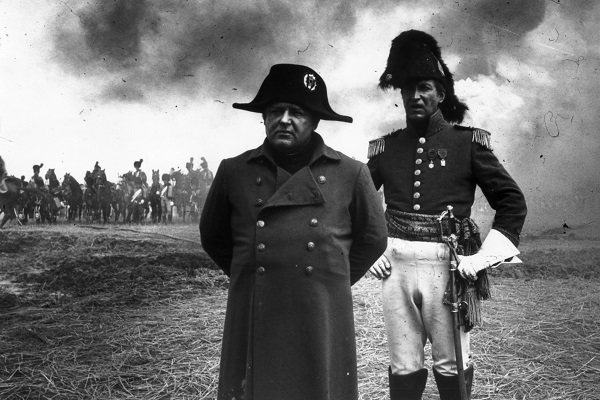Final proof – if any were needed – that Englishmen are not made of the same mettle as their rough, tough ancestors is provided on the website of the Towton Battlefield Society, who have cancelled their annual re-enactment of England’s bloodiest battle this Sunday ‘for safety’s sake…’ on the grounds that the battlefield has been waterlogged by this year’s unremitting wet weather.
This is an irony of ironies. For those who fought the original battle on the high Yorkshire plateau of Towton on Palm Sunday, March 28th 1461, during the Wars of the Roses, were not constrained by the same health and safety fears. Instead, between 50-80,000 men stood toe to ironclad toe for around ten hours in a driving snowstorm, shooting, hacking, stabbing and clubbing each other down. At the end of the slaughter – and the rout which followed, when fleeing Lancastrians were pursued pell-mell across the fields by the victorious Yorkists – around 28,000 (an estimated 1 per cent of the total population of England at the time) – lay dead or dying.
Battlefields are sacred sites, as the actor Robert Hardy, patron of the Battlefields Trust and an authority on the longbow, which executed much of the slaughter at Towton, reminded us when he wrote:
‘They are places where great skill, great courage, great bigotry, great perfidy, great cowardice, great stupidity have been shown. Where men have gone to their deaths because of passionate beliefs, uncontrollable rage or in the control of a code or discipline so powerful that it has seemed better to perish than to escape them. A battlefield is also a tomb, holding the bodies of those who died there, in Towton’s case a very great number, a perpetual shrine and memorial which should engage our thoughts and our reverence.’
Towton – important though it was in English history, bringing one monarch, Edward IV, to the throne and effectively ending the reign of another, Henry VI – does not feature in Jeremy Harwood’s Atlas of History’s Greatest Military Victories, which presents fifty generally well-chosen clashes that really did change the global weather. For a smallish country, Britain punches above her weight, with two land battles – Hastings and Bannockburn – fought on our soil; three – the Spanish Armada, Trafalgar and the Battle of the Atlantic – fought at sea; one, the Battle of Britain, fought in the air; and no fewer than fourteen – Agincourt, Orleans, Blenheim, Plassey, Quebec, Saratoga, Yorktown, Omdurman, the Marne, the Fall of France, Alamein, D-Day, the Gulf War and the fall of Baghdad involving – British troops fighting in foreign fields. The latter two a useful reminder that our imperial past did not end with the fall of our empire.
One red thread that runs through the book is the persistence of an east-west struggle in the history of conflict. From Marathon, Salamis and Thermopylae through the turning back of the Moors at Tours, the fall of Constantinople, and Christendom’s great naval revenge at Lepanto, down to the modern and contemporary battles of Tsushima, Inchon, Dien Bien Phu, the Six-Day War and Saddam’s wars, the story has been, in one form or another, one of Occident pitched against Orient.
Often in warfare the presence of a single brilliant general on the field – Gustavus Adolphus at Breitenfeld, Marlborough at Blenheim, Grant at Vicksburg – has proved the decisive factor. The great Carthaginian general Hannibal, for example, won the day at Cannae by his double envelopment of the Roman host. When planning German strategy for the Great War of 1914, Alfred von Schlieffen, who was obsessed by Cannae and wrote a study of the ancient battle, planned to emulate Hannibal by repeating the Carthaginian tactics on a gigantic scale by crushing the French army between his right-wing wheeling around Paris, and his left defending the German frontier in Alsace-Lorraine. The Anglo-French victory at the Marne put a fatal spoke in the long dead Schlieffen’s wheel.
The Marne was the first occasion – apart from the brief hiatus of the Crimea – for centuries that Brits and French had met on the battlefield as friends rather than foes. Several of these Anglo-French clashes are recorded here: Hastings, Agincourt, Orleans, Blenheim, Trafalgar – but there is one glaring gap: no Waterloo. It seems perverse to have described two of Napoleon’s greatest victories, Marengo and Austerlitz, without mentioning the battle that was his nemesis. There are other startling omissions: the longest battle in history, the ten month mincing machine of Verdun, is here – but where is the Somme, apart from Towton, Britain’s bloodiest battle day?
Such quibbles aside, Harwood has done a good job, in words and pictures, of presenting concise portraits of these savage struggles and explaining why they matter. Despite the pious efforts of pacifists, no successful society has been able to escape using the scourge of war, and so long as that remains the case, it behoves us to understand it better. After all, no one ever won a battle from ignorance.
Atlas of History’s Greatest Military Victories by Jeremy Harwood is published by Icon Books (£12.99)
Nigel Jones guides battlefield tours with historicaltrips.com






Comments